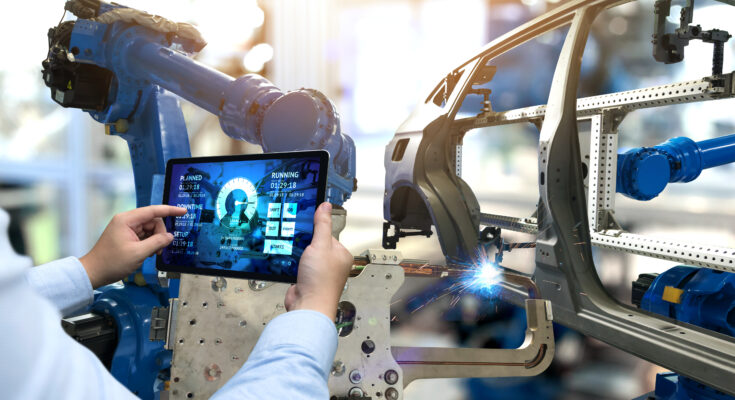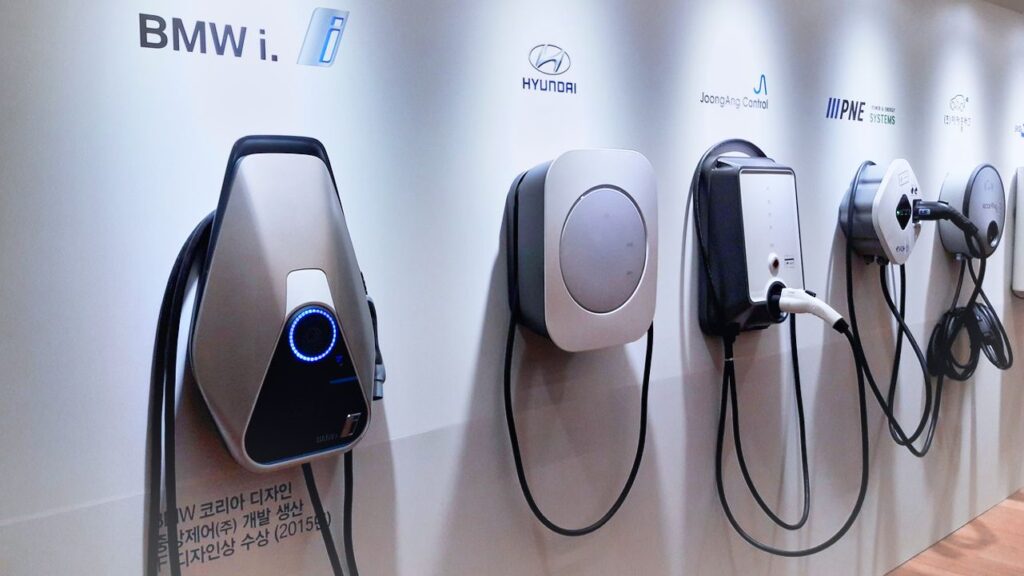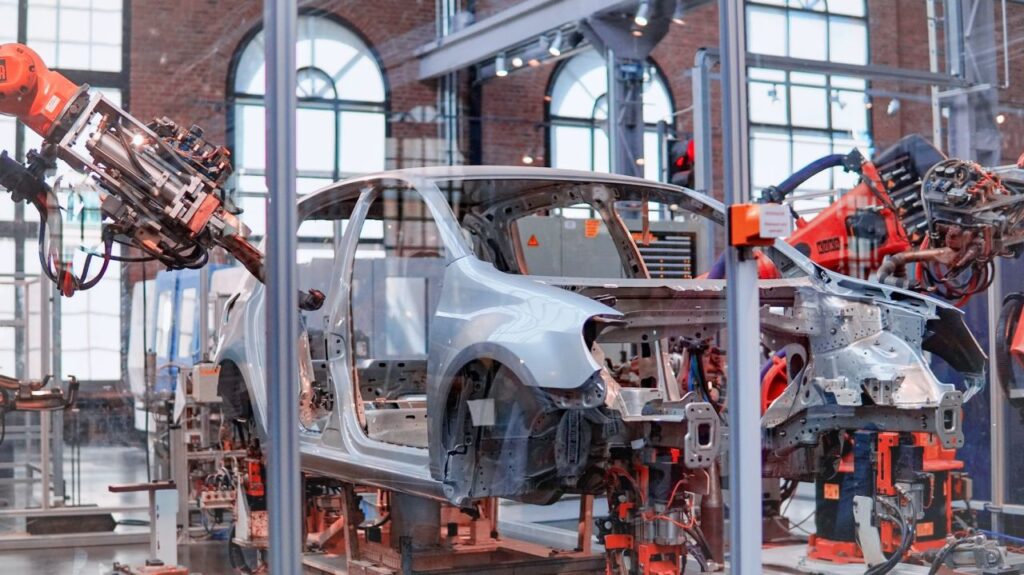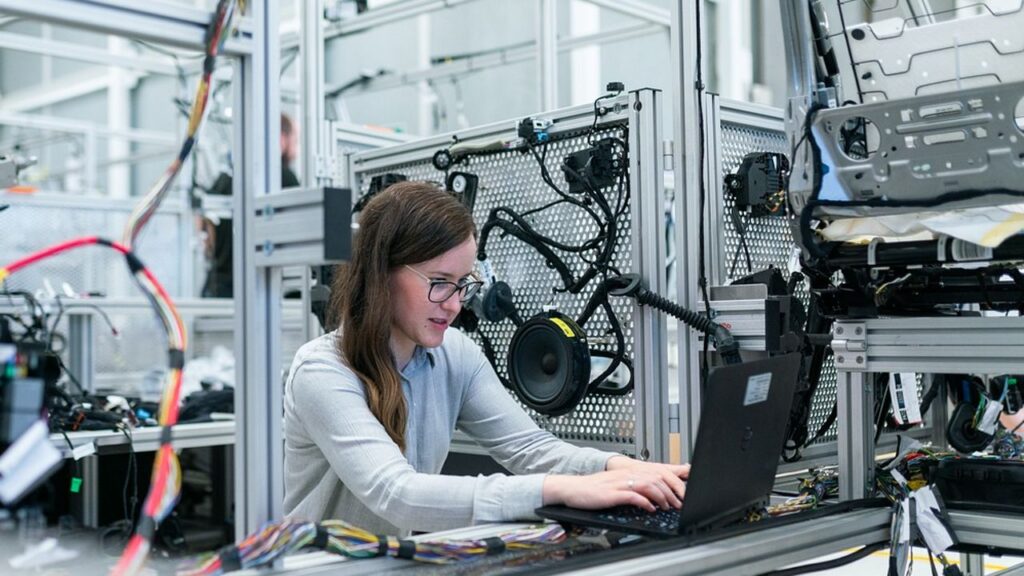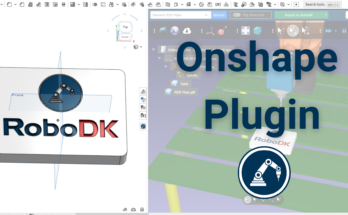There’s a great need to improve the process of electric car manufacturing across the automotive industry.
As demand for electric cars continues to increase exponentially, manufacturers are finding themselves in a situation where process improvements aren’t just “nice to have.” They are now imperative.
According to a recent article in Nature, both battery and car manufacturers are already spending billions of dollars on reducing manufacturing costs.
If you are an automotive manufacturer, you simply can’t afford not to add robotic automation into your process where possible. Your competitors are already doing it!
Is electric car manufacturing the same as for other cars?
The process for manufacturing electric cars is similar to manufacturing other automobiles… but there are some important differences.
These differences will affect your choices when you automate the process with robotics.
The core difference is manufacturing the car’s batteries. This step takes more energy than the equivalent manufacturing step with conventional cars. Some studies show that the manufacturing process contributes to 50-80% of the battery’s lifetime emissions. It’s also more complex to fit an electric car battery than it is to fit a gas tank for a conventional car.
Some people think that electric cars are easier to build than conventional cars. However, this doesn’t seem to be true in practice — electric cars have as many assembly steps as any other car. It’s just that those steps are slightly different.
How to improve the electric car manufacturing process
According to statistics by GreenCar, the number of new electric cars has risen by over 4× in the last 2 years.
This is a huge jump in demand and it looks set to continue to increase — large automotive manufacturers across the globe are already planning to stop production of gasoline and diesel-powered cars within the next 10-15 years.
If you want to keep up with this increased demand, you’ll need to find ways to improve the efficiency and productivity of your manufacturing processes.
In addition, robots are a tried and tested method for improving efficiency in automotive manufacturing.
In fact, car manufacturers have been using robots for years. Tasks like welding, screwdriving, and painting are extremely common in many car plants.
Overall, robots improve the productivity, consistency, and quality of conventional car manufacturing… and they can do exactly the same for electric cars.
7 Assembly Steps in Electric Car Manufacturing for Robots
What are some good tasks you can give to a robot?
One of the most frequently required tasks in electric car manufacturing is assembly. The many assembly steps in the process require high consistency and accuracy.
Here are 7 common assembly tasks:
- Battery cells — The core unit of the electric car’s battery is the cell. This is an intricate assembly of cathodes, anodes, and electrolytes inside a casing. It requires precise robots for the assembly.
- Battery module — At the next step up, cells are arranged into modules inside a frame that protects them from shocks, heat, and vibrations. Robots are often used to assemble these modules.
- Battery frame/enclosure — Robots can also be used to assemble the frame itself, preparing it for the insertion of the battery modules.
- Battery pack — The pack refers to the final shape of the battery that is installed into the electric car. Larger robots can insert the entire battery pack into the vehicle.
- Motor — The electric motor is what provides the power in an electric car. The assembly may be too detailed for a robot. If so, it can be a good idea to use the robot for machine tending, to tend a semi-automated machine that builds the motor.
- Powertrain — The powertrain refers to the entire set of components that create the motion of the car, including the battery, motor, gears, etc. Manufacturers can use robots to assemble almost all of the powertrain components.
- Cooling system — Keeping the components cool is vital in electric vehicles. Companies can use robots to accurately place the components of the cooling system, including pipes, cooling pads, connectors, etc.
Some Other Robotic Tasks in Electric Car Manufacturing
Beyond these assembly tasks, there are many other tasks that you can give to a robot.
These include robotic inspection, machining, welding, painting, and many more.
How to Program Your Electric Car Robot
What should be your first step when you are starting to use robotics in your electric car manufacturing?
After you have identified a suitable application that you would like to automate, it’s a good idea to decide how you will program your robot.
People often only think about programming after they have purchased their robot. However, by then it’s too late as your options are already significantly reduced. It’s a good idea to plan your robotic cell and programming options before you purchase the robot.
The programming will have an important effect on how easy it is for you to deploy your robot and update its program in the future. With the right system, even the most complex task should be straightforward to program.
Assembly tasks in particular require many programmed points and often complex trajectories. You don’t want to have to program these manually yourself.
Finally, with a tool like RoboDK or TwinTrack, you can quickly and easily program any electric car manufacturing task with whichever robot brand you most prefer.
Which task would make sense to give to a robot in your manufacturing process? Tell us in the comments below or join the discussion on LinkedIn, Twitter, Facebook, Instagram, or in the RoboDK Forum.

